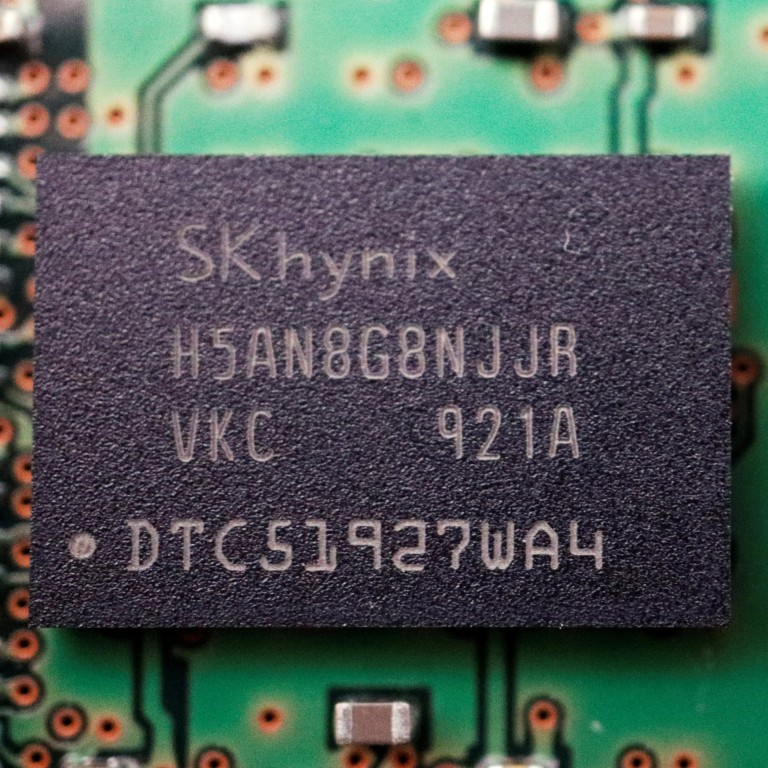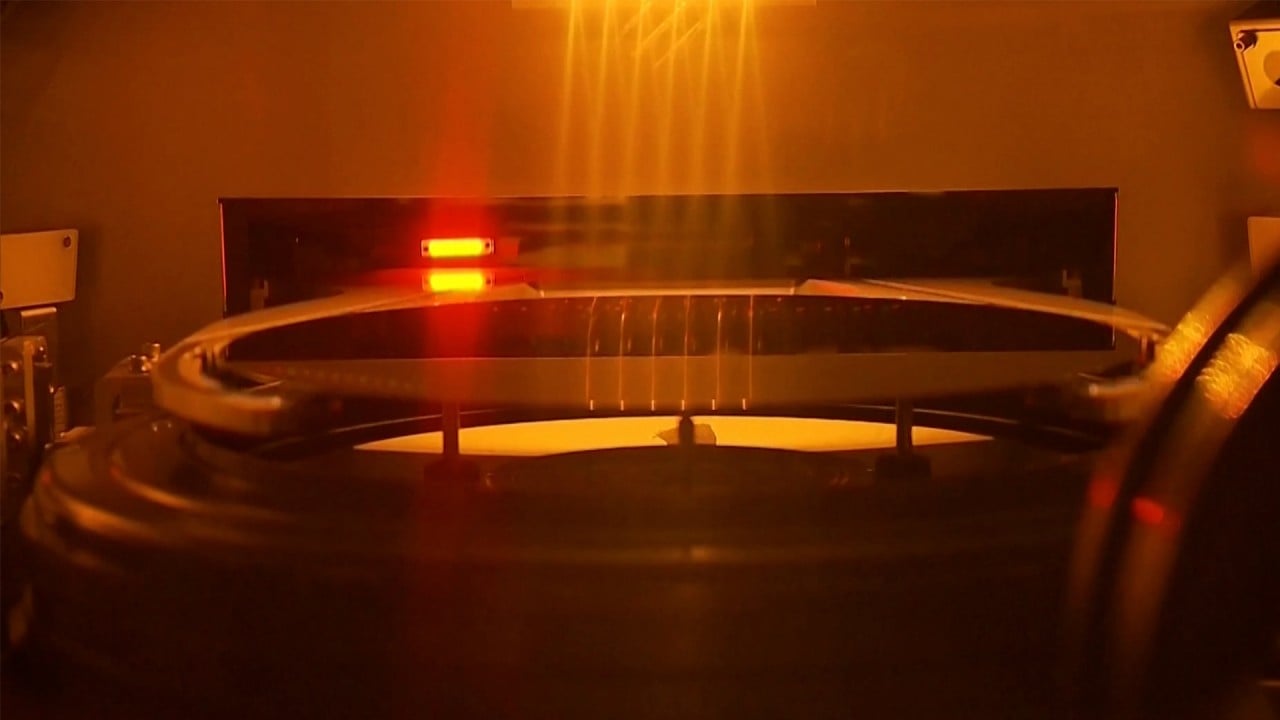
SK Hynix cuts capital expenditure in half amid weak PC, smartphone demand and Washington’s export restrictions on China
- The memory chip maker’s operating profit fell to US$1.2 billion in the third quarter amid an ‘unprecedented deterioration in market conditions’
- The results add to downbeat forecasts from other chip firms like Micron and Texas Instruments amid fears of recession and Washington’s export restrictions
South Korean chip maker SK Hynix Inc said it will cut its capital expenditure for next year by half after reporting a 60 per cent decline in third-quarter profit as memory chip demand plunged.
Hynix’s dramatic cut affirms growing pessimism about the outlook for electronics demand in the face of a potential recession as well as uncertainty over the extent of fallout from Washington’s campaign to smother China’s tech industry. It adds to downbeat forecasts that have come from other chip suppliers like Micron Technology Inc and Texas Instruments Inc.
Operating profit declined to 1.7 trillion won (US$1.2 billion) in the three months ended September, Hynix said on Wednesday, missing analyst estimates of a 2.5 trillion won profit. Revenue was 11 trillion won, missing the estimated 12.2 trillion won.
“SK Hynix diagnosed that the semiconductor memory industry is facing an unprecedented deterioration in market conditions,” the company wrote in its earnings announcement. “Shipments of PCs and smartphone manufacturers, which are major buyers of memory chips, have decreased.”
Prices of DRAM and NAND storage slumped at least 20 per cent on a quarterly basis, Hynix said. The company plans to cut production gradually, starting with less profitable products, though it still expects memory supply will exceed demand for the near term. Fellow memory makers Micron and Kioxia Holdings Corp. recently slashed their output plans in an effort to stabilise the market.
Hynix shares, which declined 29 per cent this year, were relatively flat in early trading in Seoul on Wednesday.
“This capex cut is a strong action that the market has been waiting for,” Greg Roh, head of technology research at HMC Investment & Securities, said after the results. Hynix’s move to shore up oversupply could accelerate the industry’s recovery from the third quarter of next year to the second quarter, Roh added, with server demand for DRAM likely to rebound first.
Global chip demand cooled dramatically in recent months as soaring inflation and interest rate hikes forced consumers and enterprise clients to cut spending. US supplier Texas Instruments dropped as much as 6 per cent in the hours before Hynix’s release after reporting its own underwhelming projections. TI has the largest customer list in the semiconductor industry, making it a bellwether for the overall sector.
Inventories at Hynix almost doubled to 11.9 trillion won at the end of the second quarter this year from 6.2 trillion won a year earlier. The increase was partly due to its acquisition of Intel Corp.’s NAND business, which became Hynix’s US subsidiary in December last year.
In addition to the broader market downturn, fresh US export curbs on China’s semiconductor industry increase uncertainty for Hynix’s business outlook. The Korean chip maker has won approval from Washington to keep operations going in China for a year – where it has a DRAM production lab in Wuxi and NAND facilities in Dalian – but restrictions on adopting advanced manufacturing in the country may limit the Korean firm’s ability to expand.
“The US export control will have direct repercussions to the chip industry from 2024,” Roh said. “There’s limited impact so far, but it could affect server demand in the midterm and any plans to expand capacity in China could be disrupted within a year.”


